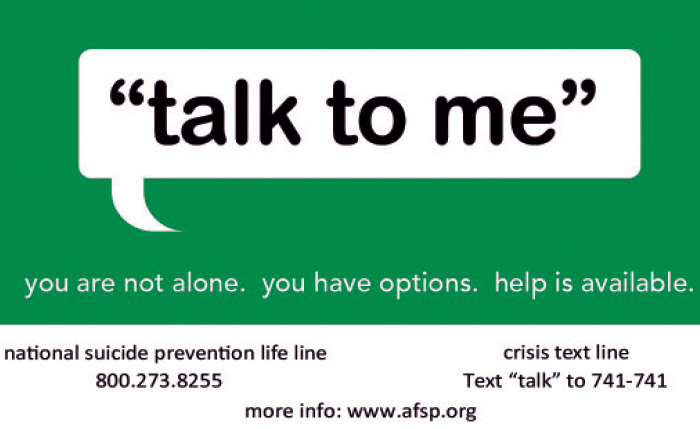Often, in this space, we talk about the importance of getting involved – volunteering with an area charitable organization, attending civic meetings, or even running for office.
Make a difference in your world.
This month, National Suicide Prevention Awareness Month, presents 30 days full of chances to make a difference—to BE that difference.
Did you know?
According to the American Foundation for Suicide Prevention, suicide is the tenth-leading cause of death in the United States. Each year, 44,193 Americans die by suicide. For every suicide, 25 people attempt to kill themselves. And suicide costs the country $51 billion annually.
Did you know?
In New York, suicide is the second leading cause of death for ages 25-34; and the third leading cause of death for ages 15-24.
Did you know?
Nearly 90 percent of Americans value mental health and physical health equally, yet about one-third find mental health care inaccessible, and more than four in 10 see cost as a barrier to treatment for most people, according to the results of a survey released in 2015 by the Anxiety and Depression Association of America, the American Foundation for Suicide Prevention and the National Action Alliance for Suicide Prevention.
Did you know?
That you can help? Suicide is not inevitable for anyone. By starting the conversation, providing support, and directing help to those who need it, we can prevent suicides and save lives, according to the Suicide Prevention Lifeline.
The SPL has also noted that evidence shows that providing support services, talking about suicide, reducing access to means of self-harm, and following up with loved ones are just some of the actions we can all take to help others.
Additionally, the Suicide Prevention Lifeline emphasized the importance of knowing the risk factors that make it more likely that someone will consider, attempt, or die by suicide; and knowing the warning signs that may help you determine if a loved one is at risk for suicide.
Risk Factors:
• Mental disorders, particularly mood disorders, schizophrenia, anxiety disorders, and certain personality disorders
• Alcohol and other substance use disorders
• Hopelessness
• Impulsive and/or aggressive tendencies
• History of trauma or abuse
• Major physical illnesses
• Previous suicide attempt(s)
• Family history of suicide
• Job or financial loss
• Loss of relationship(s)
• Easy access to lethal means
• Local clusters of suicide
• Lack of social support and sense of isolation
• Stigma associated with asking for help
• Lack of healthcare, especially mental health and substance abuse treatment
• Cultural and religious beliefs, such as the belief that suicide is a noble resolution of a personal dilemma
• Exposure to others who have died by suicide (in real life or via the media and internet)
Warning Signs:
• Talking about wanting to die or to kill themselves
• Looking for a way to kill themselves, like searching online or buying a gun
• Talking about feeling hopeless or having no reason to live
wings
Did you know?
In September, National Suicide Prevention Awareness Month, you can
BE that difference.
For more information, visit afsp.org
If you are in crisis, please call the National Suicide Prevention Lifeline at (800) 273-TALK (8255) or contact the Crisis Text Line by texting TALK to 741-741.

